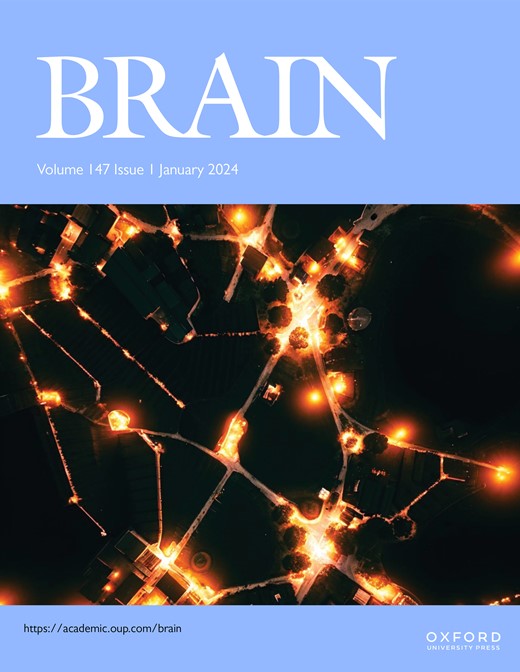帕金森氏病小鼠模型通过神经周围网络调节实现运动恢复
IF 11.7
1区 医学
Q1 CLINICAL NEUROLOGY
引用次数: 0
摘要
神经周网是一种特殊的细胞外基质结构,优先形成在小白蛋白中间神经元周围,以调节可塑性。虽然皮质神经元周围网络与感觉可塑性和记忆调节有关,但初级运动皮层的神经元周围网络在很大程度上被忽视了。我们发现,在健康的成年小鼠中,ChABC治疗导致初级运动皮质周围神经元网的短暂减少,导致运动功能的暂时缺陷。在基于中脑单侧6-羟多巴胺病变的帕金森病小鼠模型中,病变后2周,两个初级运动皮层半球的神经网络水平下降,但在5周内恢复到基线水平。我们发现,通过ChABC治疗,初级运动皮层周围神经元网的短暂性减少可以在加上运动刺激时解锁运动恢复。这种恢复与双侧神经周围网络包裹的小白蛋白中间神经元的增加和小白蛋白细胞体兴奋性突触标记物的再平衡有关。这些发现揭示了神经周围网络可塑性的不同作用——首先是对最初的中脑损伤的反应,然后是在ChABC治疗后的救援过程中——表明初级运动皮层神经周围网络在调节运动功能方面起着微妙的作用。这种二元性使得周围神经元网络成为帕金森病运动康复策略的潜在治疗靶点。本文章由计算机程序翻译,如有差异,请以英文原文为准。
Motor recovery through perineuronal net modulation in a Parkinson’s disease mouse model
Perineuronal nets are specialized extracellular matrix structures forming preferentially around parvalbumin interneurons to regulate plasticity. While cortical perineuronal nets have been implicated in sensory plasticity and memory modulation, perineuronal nets of the primary motor cortex have been largely overlooked. We found that transient reduction of primary motor cortex perineuronal nets by ChABC treatment in otherwise healthy adult mice resulted in temporary deficits in motor function. In a mouse model of Parkinson's disease based on unilateral 6-hydroxydopamine lesions of the midbrain, perineuronal net levels were decreased in both primary motor cortex hemispheres 2 weeks post-lesion, yet returned to baseline within 5 weeks. We discovered that subsequent transient reduction of primary motor cortex perineuronal nets through ChABC treatment could unlock motor recovery when coupled with motor stimulation. This recovery was associated with a bilateral increase in perineuronal-net-enwrapped parvalbumin interneurons and a rebalancing of parvalbumin cell soma excitatory synaptic markers. These findings reveal distinct roles of perineuronal net plasticity – first in response to the initial midbrain lesion and then during rescue after ChABC treatment – suggesting that primary motor cortex perineuronal nets play a nuanced role in regulating motor function. This duality positions perineuronal nets as potential therapeutic targets for motor rehabilitation strategies in Parkinson's disease.
求助全文
通过发布文献求助,成功后即可免费获取论文全文。
去求助
来源期刊

Brain
医学-临床神经学
CiteScore
20.30
自引率
4.10%
发文量
458
审稿时长
3-6 weeks
期刊介绍:
Brain, a journal focused on clinical neurology and translational neuroscience, has been publishing landmark papers since 1878. The journal aims to expand its scope by including studies that shed light on disease mechanisms and conducting innovative clinical trials for brain disorders. With a wide range of topics covered, the Editorial Board represents the international readership and diverse coverage of the journal. Accepted articles are promptly posted online, typically within a few weeks of acceptance. As of 2022, Brain holds an impressive impact factor of 14.5, according to the Journal Citation Reports.
 求助内容:
求助内容: 应助结果提醒方式:
应助结果提醒方式:


